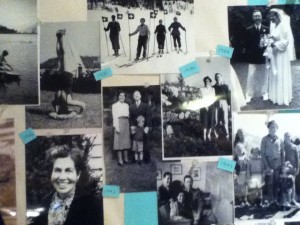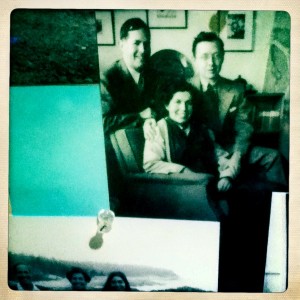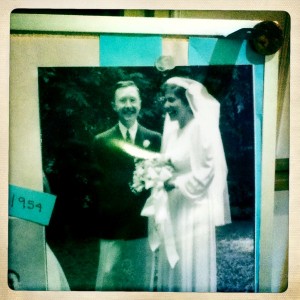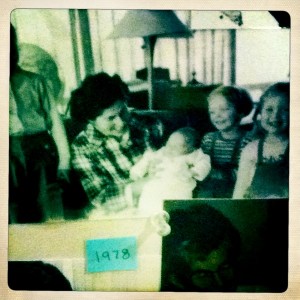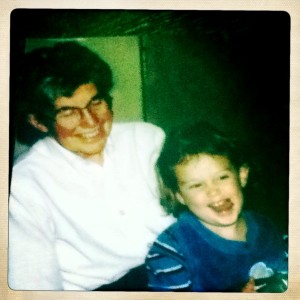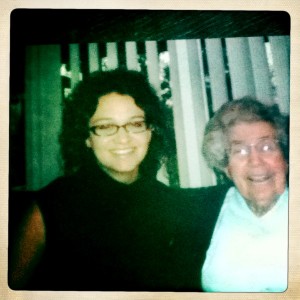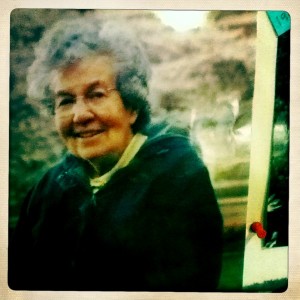Posts Tagged ‘death’
Yesterday driving home from the store on the only paved road right outside of town, I slowed down as I saw a family huddled together on the opposite side of the road. The older son, stood in the street to direct traffic around his parents who were kneeling down on the edge of the road. There is no curb between where the street ends and a small grassy ledge begins. I watch as the mom carefully places red, yellow and white flowers around a wooden cross. I drive along this road at least three times a day, slowing down just enough to go over the 6 different speed bumps, but I have never noticed that cross before. I instantly knew that this family cannot not notice that cross. They probably see it in their dreams and feel a lump in their throat when they walk by it. Because when you lose someone you love, you find the memory of them more present than ever.
I don’t know exactly what happened there. But I do know, someone they loved died in that spot, by the wooden cross on the side of the road. They went yesterday to decorate, to honor their life, and to invite anyone who drives by slowly enough to pause and take note— We remember their life, won’t you too?
Guatemala, like many Latin America countries celebrates Dia de Los Muertos or Dia de Los Santos on November 1st as a way to honor and remember loved ones who have died. In a blend of Mayan and Catholic traditions, Guatemalans visit the local cemetery arriving with arms full of fresh flowers to decorate the graves of loved ones. Some families gather to laugh and tell stories while kids fly kites. Traditionally the idea was that you can send a message on the kites up to the sprits of those who have died. Other families sit more somberly and pray, their heads resting against the large cement aboveground tombs.
There is such beauty in remembering, because it gives permission to grieve. For some grief is a very private thing, but in Guatemala grief is something that is shared. There is often something powerful about making it public, about letting other share in your pain and in your memories.In general, I don’t think our U.S. culture knows how to grieve or mourn together. We don’t like to talk about death. Maybe there part of evangelical Christian culture that makes us believe and give pat answers about how “he is in a better place.” But even when you have hope that you’re loved ones are in heaven, that doesn’t necessarily help those who are still grieving here on earth.
Other cultures seem to do this so much better, then we do. I remember reading about the Jewish tradition of saying Kaddish, a prayer for the dead, that was supposed to be said twice a day for an entire year after someone died. Whoever was mourning, was instructed to pray those words, not in solitary but with people, in community. I have had friends tell me one after loosing a parent or a sibling, one of the most helpful things people did was to share a memory of the person who died. The person grieving often feels so alone in their pain. When someone else shares a memory it reminds them of their loved one and it gives a little bit of life to someone is so recently gone. The person who is grieving is usually thinking about their loved one all of the time, so when someone else uses their name or shares a memory it usually makes them not feel so alone.
I remember one year where three friends, my age, all lost a parent. One to cancer, one to plan crash and one to suicide. No one in their twenties is ever prepared to have to bury a parent. I am not sure if can ever really be prepared to burry a parent. I remember sitting with one friend the day after her dad’s funeral. She said, “Sometimes what feels the hardest is everyone else’s world keeps going, but I feel like mine just ended.”
Typically in the U.S. we set-aside a day at best. Maybe we attend a funeral, send some flowers, write a sincere, sympathetic card and then that’s it. Our life and schedule move on. But what if there was a different way?
In Guatemala there is a catholic tradition called La Novena. It literally means “the ninth” or “the nine days.” Every night for nine days after someone has died, family and close friends gather in the deceased person’s home or in the street in front of their home just to be and sit. The family sets up white plastic chairs and a tarp or canopy to protect from rain and people come. They stop what is going on in their world to be with the one who feels like their world just ended. There is coffee and sweet bread and kids running around. For nine days people gather to mourn together and care for the widow or family who just lost someone.
I remember the first time I experienced a death here in Guatemala. Gerber called me and said the 4-year-old son of one of his neighbors had died in the town where he grew up. I naïvely asked, when the funeral would be and what should we bring. Gerber paused on the other line, “No, we go tonight for the valorio.” I remember looking at my watch. It was 5pm. I drove home, changed my clothes and we left for his neighbors’ house. There was a small casket in the front of the garden. Neighbors had already brought chairs and flowers. Baskets of sweet bread were making the rounds and everyone sat. There was some music and a prayer, people came and went, kids played in the doorway. But that family was not alone. Gerber said people would be there the whole night. The burial would be the next day and then La Novena would start. I sat there and glanced up at the young mom and her parents, who had just lost a son and a grandson, their eyes red and puffy from too many tears. I said a silent prayer and imagined for a split-second the fear of what it might feel like to lose a child.
After a few hours of sitting had passed, we got in the car to head home. I told Gerber, “Our countries handle death in such different ways.“ I explained how in the US a lot of people are cremated and then a funeral or memorial service may be planned for weeks or sometimes months later. Invitations get sent out, people fly in and schedules get coordinated. Part of this is our U.S. culture of busyness and planning, and perhaps having access to more advanced morgues and burial options. In Guatemala, people die and then are buried usually within 24-48hours because there are very few places to preserve or embalm the body.
In the U.S., I think we would like to compartmentalize grief. As if it’s something we can check off, follow 5 simple steps and then be done with it. But I think other cultures better embrace the fact that grief is a process, one that ebbs and flows with memories and seasons and certain times of year. And how beautiful to know that every year on November 1st is a day set-aside to remember loved ones who have died.
This morning, Angela, the woman who cleans our home, greeted me as I was about to leave for work. She drives a green pick-up truck, has more energy than I do and you would never know by looking at her that she has teenage grandkids. I asked her how her weekend was. “Fue bien bonito.” It was lovely.
She told me how every year on Dia De Los Muertos she goes to the cemetery where her son is buried. I have met some of her adult-children, but I never knew she had a son that died.
“He would have been 37 this year,” she smiles, like only a mother does, knowing exactly how many birthdays have passed.
“He died when he was 6 months old. He was born with a hole between his esophagus and stomach. He needed an operation, but I didn’t have money to pay for it.”
Her eyes look toward the tile floor. My heart drops. I am so sorry, I say. What was his name?
She smiles, Se llama José. His name was José.
When you reserve a day to honor and remember loved ones who have died, you not only acknowledged their death but you also get to say their name and remember who they were when they had life.
Three weeks ago I flew up to Seattle with my family to celebrate and honor my Grandma Emerson who passed away in October. The truth is those three weeks feel like 3 months ago. I wrote this after her service on the plane ride home, but I am just now getting around to posting it. I don’t think she would have minded that it’s a little late : )
{ her father, my great-grandfather, otto meyerhof }
My grandma Bettina Meyerhof Emerson was a strong woman- in every sense of the word. She was born in 1918 in Kiel, Germany, daughter of Otto and Hedwig Meyerhof. Her father had arranged for her to go nursing school in England, but she opted for medical school in the US. When your father is a Nobel Prize Winner for Medicine you think she might have respected his educational choices for her, but she didn’t. And I kinda like that. She was determined.
In the 1930s when it was longer safe for Jews to live in Germany because of Hitler’s growing anti-semitism, she escaped through France and came to the United States. She started a new life on her own, in an entirely new culture and language at the age of 18. She embraced challenges.
In 1943, she graduated from John Hopkins Medical School as ONE of nine women in a class of seventy-five. She defied social norms and expectations.
Later, she got married and moved to Seattle, where she raised 5 daughters to value education, learning and being resourceful. She was apparently part-homemaker, part-handyman and part-doctor. My grandma would knead homemade bread for the girls and sew handmade clothes for their dolls. When the washing machine or the fridge failed to function as needed, she would take it apart and try to fix it. And apparently when you grow up and your mom is a pediatrician, there is no need to visit the doctor’s office, because the doctor’s office (and all the medicine and injections you could need) come right home to the kitchen table. She was a woman of many talents.
As a Grandmother she paid attention to each of us six grand-kids. She diligently sent handwritten birthday cards to each of us. It didn’t matter what state or country we lived in, she sent them. And if you were lucky, sometimes Grandma would also send cutout newspaper articles that reminded her of a place you had traveled to or some interesting new development in your field of study. She had had an amazing ability to remember details.
My grandma was incredibly wise, (some may say frugal) with her resources. Many of the handwritten cards and letters I just mentioned above would sometimes arrive on previously used envelopes, with a label covering the former address. I remember the first time I stayed with my grandma for a weekend by myself and I opened up her kitchen cupboard to help make lunch. Inside were plastic take-out containers that most people would have thrown away, but not Grandma. She had washed, saved –and labeled them! The first thought that crossed my mind- so, this is where I get it from. She saved and re-used what she could and gave away what was very important.
She gave me the opportunity to go to college. She financed an education that my family or I would not have been able to afford. It’s another story that involves war reparations from Germany, stolen property from the Nazis, IBM, and a lawyer. But the point is that instead of choosing to live a lavish and fancy life with the large sum of money, she gave it to us grand-kids. She understood what it meant to be generous in ways I can only hope to replicate.
Later in her life, my Grandma reconnected with her Jewish roots and started attending a local synagogue in Seattle. At the age of 77 she started studying Hebrew and the Talmud. (I think to start learning anything at 77 years of age is just plain impressive.)
{some of her treasures that I got to bring home }
Now, I don’t claim to know a lot about Judaism, but I have come to respect many of the aspects of the Jewish faith- especially the tradition for mourning. In our fast-paced, quick-fix kind of society we often value efficiency over process and don’t know how to make space and time for the seasons of grief. But the Jewish faith challenges those ways of being. In the Jewish faith, mourning and bereavement are a discipline and practice done in the company of others.
• • •
At the end of my Grandma’s service we prayed the Kaddish- a Jewish prayer in Aramaic- led by the rabbi. I find it interesting that Kaddish is one of the Jewish prayers that must be said in a community of believers. You are not allowed to say it alone. In Lauren Winner’s book “Mudhouse Sabath” she explains:
“Tradition says that for a year after the loss of a parent, the mourner is to say this prayer twice a day. With other people. This was not a solitary act, it was a communal event.”
And I think its one of the reasons why choosing to gather for a memorial service is so important. As a community of friends and family we choose to gather, to honor and remember a loved one. We could individually remember my grandma, and mourn separately, but we choose to gather together. And I think this is significant.
On Sunday morning January 8th we said Kaddish for my Grandma.
There are many things I appreciate about Guatemalan culture— a value of helping people in the moment, over finishing a task at hand, an emphasis on sharing no matter how much or how little you have and the ability to show up and be present.
Most Guatemalans are good at showing up. They get that sometimes the best thing you can do is: just. be. there.
literally. physically. just show up.
Many of you know that I am engaged to a handsome and adorable Guatemalan man (who may not be thrilled that I just called him adorable on the public blog-sphere : ) Because we live far away not many of you actually get to know and interact with him on a day-to-day basis like I do.
• • •
There are many reasons I like this man, but one of them is that he is great at showing up. In the moment, when there is a need, he’s the person you call. You need someone to help you tow your car? Gerber will be there. You have a question about paperwork for immigration? He’ll drive you there. You’re making dinner and don’t have avocados. He’ll go buy them for you. He is incredibly loyal, generous with his time and the kind of person you want by your side— always.
And I know he isn’t like this just for me, but for a lot of people. Last night he found out that his friends’ grandmother passed away. So he went to show up. To just sit with his friend. To just be there. I learned that it is customary with a relative dies in Guatemala to have what’s called a velorio (loosely translated- a wake) . Family and friends gather at the family’s house and stay up all night, drinking coffee, eating pan dulces, talking, sitting, and just being together. I imagine the first night after a loved one dies you don’t sleep much any ways- so it seems nice to know you will spend that night with people who care about you and can mourn with you. People who will show up.
• • •
I want to be the kind of person who will just show up. And I think in order to just “show up” it means being willing to change, quick to adapt and ready to help in the moment. Often my “style” of helping is to plan ahead—something like, ok, I’ll be there on Saturday morning…or… sure, I can help you write that letter next week. It’s what I called: Planned. Ahead. Help. I know there is nothing wrong with this kind help. But it’s not really the same as “showing up.”
• • •
Showing up is something you do now. in the moment. today, not next week.
Because when you think about it, the times we need someone to show up the most are often the times that are not planned.
I went to a memorial service today for a friend’s dad , who died tragically in a plane crash earlier this week- absolutely, horrible. And then I got an email from another friend whose dad passed away just 10 days after being diagnosed with pancreatic cancer and 33 days before her wedding. oh. These kinds of events leave me feeling raw, and heavy-hearted and sad. I think I naturally have lived with a life-works-out-for-the best-kinda-attitude, but sometimes it’s hard to see the best in situations likes these.
When you’re in your mid-twenties you don’t expect to have to bury one of your parents. Obviously, death seems untimely almost whenever it hits, but there is a kind of childlike faith and beauty about holding on to the belief that your parents are strong, brave and maybe even, slightly invincible. But that notion seems to fade away when you lose someone, especially a parent. Something changes when you are hit over the head with the sobering, shocking and surreal notion of loss.
I haven’t lost a parent, so I won’t even begin to explain the array of feelings that comes with that. But I know what it feels like to walk through the loss of a grandparent, and a dear friend that was taken too soon, or a lost hope or expectation. I’ve learned that you can’t qualify or quantify loss. Some loss is tragic and catastrophic other loss is daily agony and pain. You just can’t compare the two.
Jerry Sitster, wrote an incredible book about his own journey of loss and grief, called, A Grace Disguised. After he lost his mother, wife and two kids in a car accident he says, “Loss is loss, whatever the circumstance. All losses are bad, only bad in different ways. No two losses are ever the same. Each loss stands on its own and inflects a unique kinds of pain. What makes each loss so catastrophic is its devastating, cumulative, and irreversible nature.”
I left the memorial service thinking, now what? This is only the beginning- a memorial service is the first painful step in acknowledging the loss, but there are still months and years ahead of grieving a wonderful husband, a loving dad, a trusted doctor and a beloved friend.
I can’t but help think of a tree stump. When you lose someone it’s like a part of your life, maybe a part of yourself, has been cut down. It’s like all of the sudden part of you is missing. Almost as if there was this big, strong tree in your life and now you’re left with a stump. In the book, Sitser explains that every time he looked out into his garden all he could see was this stump that reminded him of what had been once there, and reminded him of who he had lost. And he says that the stump never goes away. The place that person had in your life and in your heart will remain. The challenge comes in the process of healing and rebuilding. How do you let the stump be there- naming the empty, longing and grief that accompanies it, but all the while trying to began to live life again? What does it look like to plant flowers of grace, hope and beauty around the tree stump that is loss?
There is not a simple answer. But maybe, just maybe there is some kind of grace that begins to grow out of our deep hurt and pain. I guess I have to put hope in the God whom I believe in, the God who weeps and hurts with us, and yet also wants us to experience His grace in unexpected ways. I wonder in pain and suffering and loss is there such a thing as A Grace Disguised?


